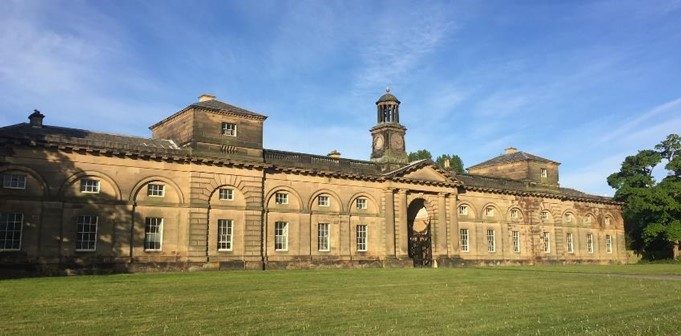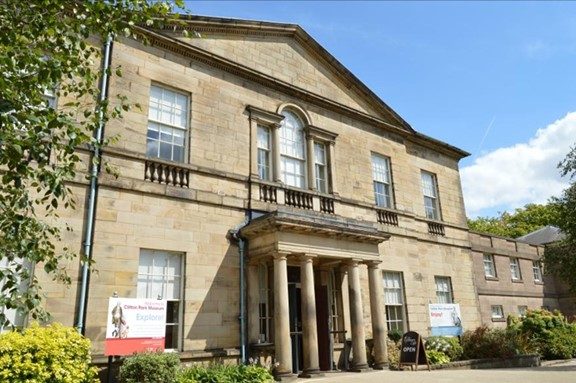This year marks 300 years since the birth of John Carr of York, one of the north’s finest architects from the 18th century.
Three centuries on, his legacy remains in the extensive portfolio of public and private buildings he designed that have shaped the architectural heritage of the north of England and beyond.
Born in Horbury, near Wakefield, on 28th April 1723, John Carr followed in the footsteps of three generations of Carr men by becoming an apprentice to his father, Robert, who was a stonemason and quarry owner.
Although his foundations were in masonry, Carr taught himself architecture, his first independent building being Thurgoland’s Huthwaite Hall in 1748.
Carr became one of the best known and busiest architects of his time, having built, repaired or changed over 120 buildings in his sixty-plus year career. From town halls to country houses, churches to prisons, and even a few racecourse grandstands, Carr’s neoclassical style was favoured by many.
He was regularly commissioned by local gentry, Whig politicians, and influential industrialists to build or enhance their private residences. Harewood House in Leeds was the first major job to establish his reputation where he worked alongside Robert Adam who would influence his future work.
One of the most powerful of all landowners that Carr struck up a long-term allegiance with was Charles Watson-Wentworth, 2nd Marquess of Rockingham. Lord Rockingham appointed Carr to redesign parts of the Palladian east front at Wentworth Woodhouse that had been originally designed by Henry Flitcroft, adding another floor to parts, as well as the porticoes.

Carr was also commissioned to build many follies within Wentworth Park, such as Keppel’s Column, Needle’s Eye and the Rockingham Mausoleum. And the Stable Block at Wentworth Woodhouse, once the largest in the country housing the family’s 84 hunting, riding and carriage horses, was also designed by Carr.
Elsewhere in South Yorkshire, he worked on the likes of Aston Hall, Cannon Hall, Clifton House, New Lodge, and Ravenfield Hall.
Socialite Elizabeth Parkin who bought the Ravenfield estate in 1749 had Carr build a new church and mansion house. The church still remains, but the house was sold off in the 1920s, unoccupied until WWII and then burnt down in 1961.
At Cannon Hall, John Spencer commissioned Carr in 1764 to add two new wings to his family’s home for a library and dining room. Aston Hall was rebuilt by Carr in 1771 for the Darcy family following a fire.

Rotherham’s Walker family had two properties built by Carr. Joshua, who inherited the family’s iron and steel business, had Clifton House built in 1783 which is now the town’s principal museum. His younger brother, Joseph, had Eastwood House built a few years later which was demolished in the 1920s.
Carr was notable for the consistent quality of his designs, often following the London fashions of Rococo and neo-Classical. Most of his work was rooted in Palladianism, with perfect proportion, symmetry and balance; one side of the building would often be a mirror image of the other.
Inside, the layout of rooms provided generous and functional living space. He worked with clients to achieve the building they envisioned while keeping the build practical and within budget.
Amongst his lesser-known achievements was designing the first grandstand built for a sporting venue, York’s Knavesmire Racecourse, in 1753. It was followed by the grandstand at Richmond in 1755, now a ruin; and others for Nottingham and Doncaster in 1777, both later demolished.
He also became the bridgemaster for both the North and West Ridings of Yorkshire, building or maintaining over 60 bridges.
In his personal life, he married Sarah Hinchcliffe who was ten years older than him and had been a maid at Bretton Hall where he worked in his early career. The couple had no children, but his nephew William became his heir.
He lived in Yorkshire all his life, mostly in York where he became a freeman of the city due to his outstanding contribution to its architecture. He was twice appointed Lord Mayor of York in 1770 and 1785.
Carr eventually retired in his early 80s, only a year before his death in 1807. He is buried at Horbury Church that he designed and built at his own expense.

To celebrate John Carr’s 300th birthday, Wentworth Woodhouse has teamed up with Donald Insall Associates and nine fellow John Carr sites to launch the John Carr 300 Challenge. Schools in each corresponding area have been tasked with studying Carr’s life and redesigning a missing element of each building. At Wentworth, this will be the imposing entrance archway and clock tower on the stable block.
“We want budding designers and architects of the future to let their imaginations run riot and create something exciting to go in its place. It could be strikingly modern or influenced by architecture of the past; the choice is theirs,” said Jen Wall, Wentworth Woodhouse Preservation Trust’s Skills Development and Learning Officer.
“Our challenge celebrates the work of one of Yorkshire’s most respected sons and aims to encourage creativity and career aspirations. The Trust is passionate about helping young people through education and plans to set more design challenges for schools in the future.”
Each site will work with Donald Insalls’ architects to choose winners from educational Key Stages 1, 2 and 3 at the end of June. The best designs will go on show at each site during the national Heritage Open Days festival in September.
Wentworth Woodhouse’s winners will be rewarded with a specially arranged visit for their entire class to the house and gardens, including the newly-opening Forest of Bewilderment.






